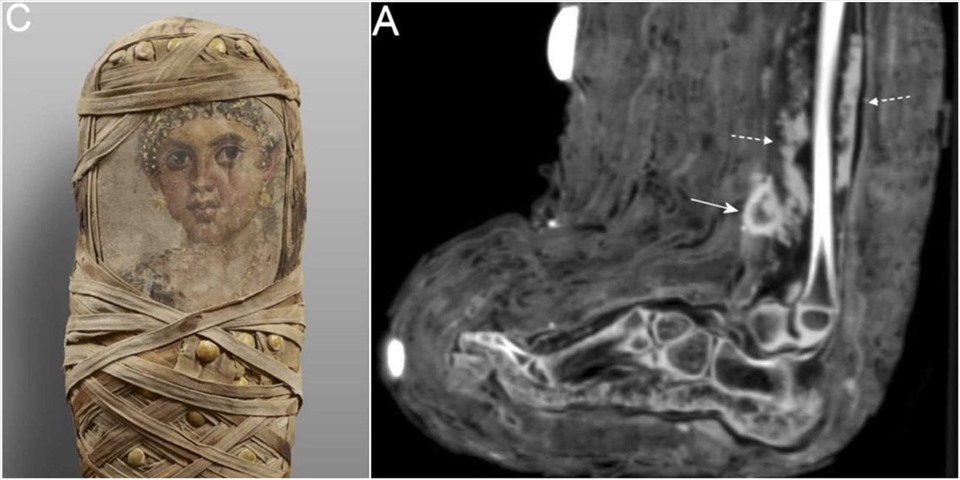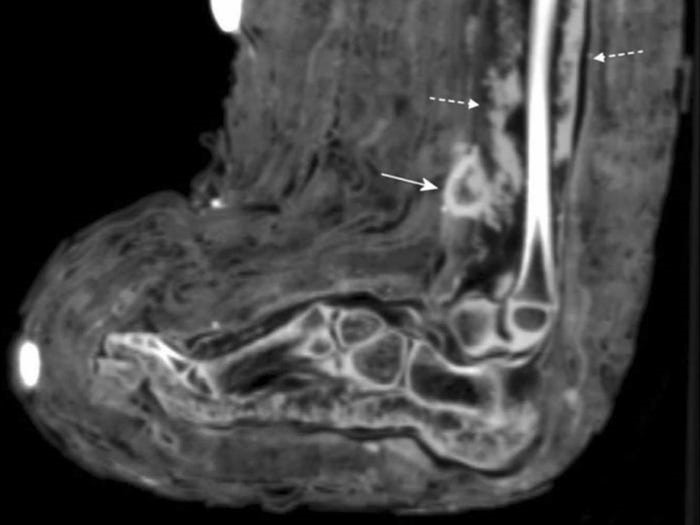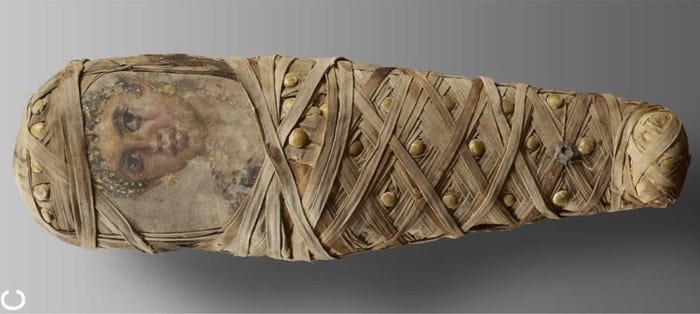Egyptian mummies with bandaged wounds give scientists more insight into ancient medical methods.

First time discovered Egyptian mummy with bandage wound. Photo: Elsevier
Never seen
The discovery of a wounded Egyptian mummy was published in the International Journal of Paleontology. Researchers discovered a bandage on the mummy of a girl less than four years old who died some 2,000 years ago.
Research shows that wound dressings show signs of infection. “It gives us a clue as to how the ancient Egyptians handled such infections or abscesses,” said Albert Zink, head of the Institute for Mummy Research in Bolzona, Italy, and author of the study. good.


CT scan image of an Egyptian mummy’s wound. Photo: Elsevier
The Egyptian mummy in this study was taken from the “Tomb of Aline” in Faiyum Oasis, southwest of Cairo. This discovery surprised scientists because they did not initially intend to search for this wound. “It was really exciting because we didn’t expect it. It has never been described before,” Zink said.
Rare revelation about ancient medicine
The ancient Egyptians were said to be masters of medical methods. The ancient Egyptians didn’t know what problems we take for granted today like heart function, how bacteria cause infections, but they had a pretty good idea of how to treat the symptoms of illness. , experts pointed out.
“We already know from other evidence, such as papyrus, that they have good experience in treating injuries,” Zink stressed, so he was surprised that these types of wound dressings had not been seen in the past. previous mummies.

The little girl mummy has a portrait of a girl on the outside and decorative gilded buttons on the outside. Photo: Elsevier
With the Egyptian mummy of a 4-year-old girl, the wound dressing was discovered when scientists performed periodic CT scans of the mummy. Expert Zink informed, the wound was infected when the girl died because the scan results showed pus. Signs of infection are marked with arrows in the scan.
“Most likely they applied some specific herb or ointment to treat the inflammation of this area,” said the study’s lead author.
Expert Albert Zink wanted to take a sample of the mummy from the area of the wound to find out what caused the infection and how the ancient Egyptians treated the wound. However, this desire ran the risk of opening the mummy. Alternatively, another option is to take the sample with a biopsy needle.
The mystery of the wound bandage’s existence
Zink said that there is no clear explanation why, in this particular case with this mummy, there was still a bandage when the embalming process was performed.
Wound dressings do not usually exist during the embalming process but it is possible that the embalmers added bandages to the wounds of the girl’s corpse, experts speculate.
The ancient Egyptians believed that mummies should be as perfect as possible for life after death, Zink stressed. “Maybe they tried somehow to continue the healing process for the afterlife,” he said.
As for the reason such cases of dressings have not been detected in mummies before, scientists simply do not detect or confuse the dressing with the mummy’s cloth.
Scientist Zink said: “There are always some surprises when we study mummies. I don’t know how many mummies in my scientific career, but there is always something new.”
Source: laodong.vn








